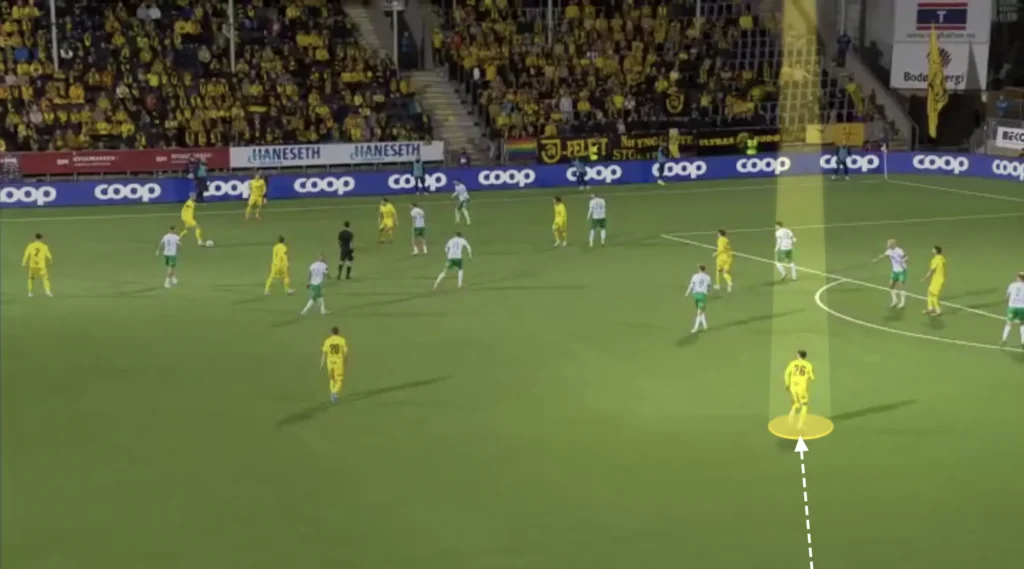In modern football, rest-defence is a key tactical concept that can make or break a team’s success. It involves how a team positions itself defensively while still in possession of the ball, ensuring they are prepared to deal with counterattacks if they lose it. This tactic is about balance — attacking with intent while staying organized defensively. This article dives into the core principles, variations, and importance of rest-defence in football.
What Is Rest-Defence?
Rest-defence refers to the defensive structure a team maintains when they are attacking. It’s the “insurance policy” that ensures a team can quickly respond to a loss of possession. The primary goal of this tactic is to prevent the opponent from counterattacking effectively and to recover the ball as quickly as possible.

Key components of rest-defence include:
- Player positioning: Ensuring players are in positions to block passing lanes and cover space.
- Compactness: Keeping the offensive shape tight to prevent gaps from appearing when possession is lost.
- Counterpress readiness: Being prepared to immediately apply pressure after losing possession.
How Does Rest-Defence Work?
Teams set up their rest-defence by positioning specific players to stay behind or near the ball while attacking the opposition. The structure often depends on the formation and the tactical philosophy of the coach.
For example:
Central Midfielders: Typically, one or two midfielders stay deeper to block central counterattacks and cover for attacking fullbacks.

Defensive Line: The backline may push higher up the pitch to keep the team compact, sweep up long balls, and intercept through passes.

Fullbacks or Wingbacks: They might tuck inside, especially when the ball is on the other side, to prevent direct transitions through the half-spaces.

The Rise of 2+3 and 3+2 Build-Up Structures in Rest-Defence
In recent years, the tactical emphasis on rest-defence has made 2+3 and 3+2 build-up structures increasingly popular among modern football teams. These formations provide a balance between maintaining attacking width and ensuring defensive solidity during transitions. By combining positional flexibility with defensive preparation, these build-up structures allow teams to attack confidently without leaving themselves exposed.
The 2+3 Build-Up Structure
The 2+3 structure typically involves two center-backs staying deep while three players—often a combination of fullbacks and holding midfielders—position themselves just ahead. This setup ensures numerical superiority in the first phase of play, helping teams progress the ball while staying prepared for counterattacks.
How the 2+3 structure supports rest-defence:
- Numerical Coverage: With two players staying as a defensive base, there is immediate cover if possession is lost.
- Compactness: The three players in front of the center-backs prevent gaps from opening between defense and midfield, cutting off central counterattack routes.
- Flexibility: Fullbacks can either invert into midfield or stay wide, depending on the situation, offering defensive support while stretching the opponent’s press.
The 3+2 Build-Up Structure
In the 3+2 setup, a back three is formed, usually by two center-backs and a dropping fullback or defensive midfielder. Ahead of them, two players—typically midfielders—occupy central positions. This shape provides both width and central compactness, allowing for greater security in rest-defence.
How the 3+2 structure supports rest-defence:
- Defensive Solidity: The back three ensures wide spaces are covered, reducing the risk of being exploited on the flanks during transitions.
- Central Shielding: The two midfielders positioned just ahead of the backline create a strong central block, making it difficult for opponents to counterattack through the middle.
- Flexibility in Transition: The wingbacks or wingers can push high during the attack, knowing the back three and midfield duo will protect against turnovers.
Why These Structures Are Popular
The rise of 2+3 and 3+2 structures reflects the growing importance of rest-defence in modern football. These shapes offer:
- Immediate Coverage: By keeping five players positioned behind or around the ball, teams are less vulnerable to sudden turnovers.
- Control in Transitions: Both structures ensure compactness and allow for quick defensive organization when possession is lost.
- Adaptability: Teams can adjust seamlessly between attack and defense, with players rotating positions depending on the situation.
The focus on rest-defence has pushed coaches to rethink how their teams build up when in possession. While these structures are primarily used to progress the ball, their inherent balance and defensive stability make them perfect for handling transitions in the high-intensity, counterattack-heavy nature of modern football.
Why Is Rest-Defence Important?
In today’s fast-paced game, many goals come from counterattacks. Teams that neglect rest-defence often find themselves vulnerable to swift transitions, especially against opponents with pacey attackers. A solid rest-defence:
- Prevents easy counterattacks: Reduces the chances of being caught out of position.
- Maintains control: Keeps the team organized even after losing possession.
- Enables quick ball recovery: Positions players in the right areas to immediately win the ball back.
Common Mistakes in Rest-Defence
Some common mistakes teams make in their rest-defenses are:
- Over-committing Players: If too many players are caught high up the pitch, it leaves the defense exposed to quick counterattacks.
- Poor Spacing: Gaps between defenders or midfielders can create easy passing lanes for the opposition.
- Lack of Communication: Rest-defence requires constant communication to adjust positions based on the ball’s location and the opponent’s threats.
Conclusion
Rest-defence is an essential aspect of football tactics, blending attacking ambition with defensive stability. By maintaining a solid structure while in possession, teams can minimize the risk of counterattacks and dominate games. Coaches at every level should emphasize this, as it ensures balance and control, even in the most chaotic moments of a match.
Mastering this tactic requires discipline, communication, and tactical awareness, but the rewards are undeniable. Whether you’re a player, coach, or football enthusiast, understanding rest-defence can offer valuable insights into the game’s deeper strategic layers.




